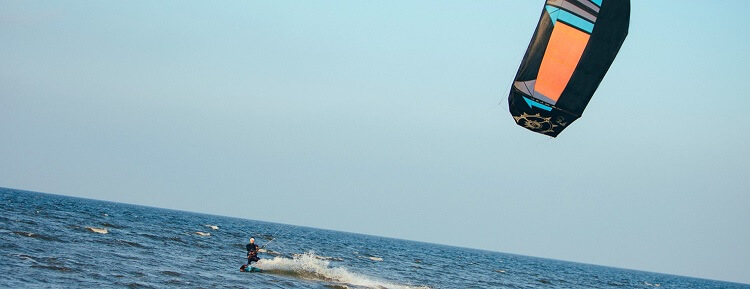
We have collected a lot of useful information about Kiteboarding Science. The links below you will find everything there is to know about Kiteboarding Science on the Internet. Also on our site you will find a lot of other information about kitesurfing, wakeboarding, SUP and the like.
The Science of Kiteboarding and Kitesurfing New Wave ...
- http://newwavekiteboarding.com/the-science-of-kiteboarding-and-kitesurfing/
- Apparent wind It is what makes Kiteboarding possible. Simply put, it is wind that you create with your own forward speed. For example; lets say that you are on a Kiteboard moving at a 90 degree angle to the wind, at a speed of 10 knots and mother nature is providing 15 knots of wind (known as true wind).
Kiteboarding - Wikipedia
- https://en.wikipedia.org/wiki/Kitesurfing
- Kiteboarding, also known as kitesurfing, is an action sport combining aspects of wakeboarding, snowboarding, windsurfing, surfing, paragliding, skateboarding and sailing into one extreme sport. A kiteboarder harnesses the power of the wind with a large controllable power kite to be propelled across the water, land, or snow.
Physics of Kitesurfing HowStuffWorks
- https://adventure.howstuffworks.com/outdoor-activities/water-sports/kitesurfing3.htm
- Once a kite is launched, it will remain at an altitude in which all of the forces are balanced. If you pull on the kite's line, you can increase the velocity of the kite and thus increase its lift. This is how movement is achieved in kitesurfing. By using your weight to pull the kite, you increase the speed at …
The Science of Flying A Kite » Science ABC
- https://www.scienceabc.com/pure-sciences/physics-kite-flying-how-to-make-aerodynamic-structure.html
- Dec 12, 2019 · To get the kite airborne you need to provide it with enough lift to counteract its own weight. There are numerous factors (e.g.,the shape of the kite, its motion in the air, quality of air, etc.) that affect the amount of lift produced in a kite
How Tails Help a Kite to Fly STEM Activity
- https://www.sciencebuddies.org/stem-activities/kite-tails?class=AQUwOVsjY_T7KAOmq6Y08rIQDLSa2Wg7VgGkfvgTPLEuK0ONTO2vIRho5XilGRbvHui54lYaICxgemJHArgs9fWP
- 18 hours ago · Adding a tail to a kite helps make the kite fly more stably by adding some needed mass and drag (which pulls the kite back, in the direction the wind is going) to the lower back area of the kite. Adding a small tail, such as the 4 inch-long tail, may help the kite fly a little more stably, but it will still spin and roll around a lot.
Get Curious about the Science Behind Flying Kites ...
- http://blog.learningresources.com/kites/
- Stability is another key piece of kite flying physics. Point out to your fearless flyers that the kite’s string is attached at three different points on the kite – the center, and both sides, probably near the rear of the kite’s body. This helps keep the kite from flapping, twisting, and …
Science At Play: Build A Paper Kite Connecticut Science ...
- https://ctsciencecenter.org/blog/science-at-play-build-a-paper-kite/
- Well, the physics that helps them to fly works very similarly for kites. Physics is a branch of science that deals with the interactions between energy and matter! Let's try our hand at making a kite. Then, we'll dive into some potential STEM career paths in physics.
Kitesurfing - Towards Data Science
- https://towardsdatascience.com/kitesurfing-figuring-out-when-where-using-data-analysis-d8bc47b87f52
- For those not quite familiar with the sport, kiteboarding requires fair amounts of steady, on-shore wind. It is a simple but crucial condition. No wind, no kite. There are of course other factors influencing the “kiteability” of a day but lack of wind/off-shore winds are the only two real show-stoppers.
Kites Lessons, Worksheets and Activities
- https://www.teacherplanet.com/content/kites
- Kites A kite is traditionally a tethered heavier-than-air craft with wing surfaces that react against the air to create lift and drag. A kite consists of wings, tethers, pulleys, and anchors. Kites often have a bridle to guide the face of the kite at the correct angle so the wind can lift it.
Kiteboarding Kitesurfing
- https://www.kiteboarding.com/
- Ozone Edge v10 - Kiteboarding.com review on the Ozone Edge for Big Air: The Ozone Edge is practicaly the gold standard that we measure other kites against for Big Air. The edge flies forward in the window building apparent wind as you go and when you send it, it hauls you up into the sky like an elevator.
We hope you found Kiteboarding Science info you were searching for.
Kiteboarding is a wonderful sport and a fun pastime. Find all the information you need on our website and get started!